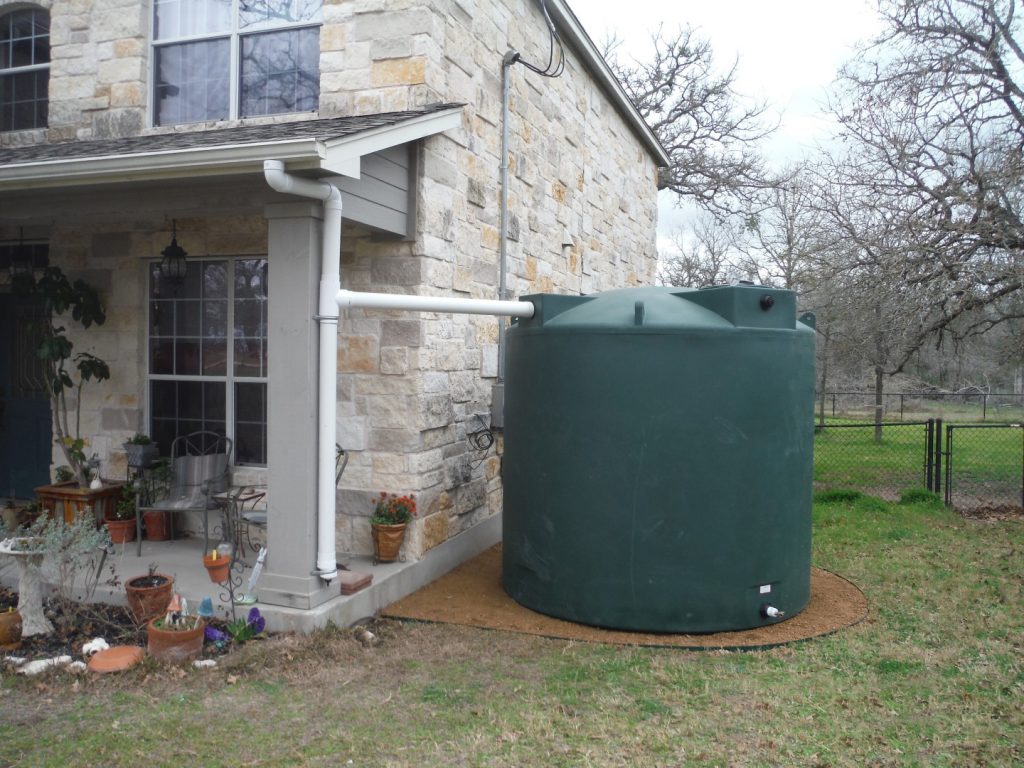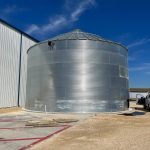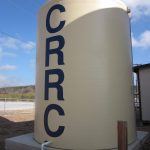
As Gary Coleman, famously said, “Whatcha talkin bout Willis? Rainwater harvesting has disadvantages???”
Well, I kinda added that last part to his quote but it does seem that way, right? While there are not many disadvantages of rainwater harvesting, like anything else, there are always some. As you will see below, most of these disadvantages stem from improper planning of the actual rainwater harvesting system and installation.
Rainwater harvesting has many, many advantages that far outweigh any of these disadvantages. With that being said, let’s dig into the disadvantages.
Disclaimer: The image at the top of this post is not a great way to design collection piping for a rainwater harvesting system since that type of design leads to its own disadvantages.
Unreliable Rainfall
Since rain events are defined as an “act of god”, thinking that your rainwater harvesting system will provide a predictable source of water is not possible. While you may not be able to rely on rainwater harvesting as a long-term, drought-proof source of water supply, there are certain design and sizing ideas that can help minimize the effects of rain’s unpredictability.
Rainwater storage tanks can take up valuable space around your house
Rainwater storage tanks can get very big quickly. While a 250-gallon tank is approximately 3’ diameter by 5.5’ tall, a 2500-gallon tank is approximately 8’ diameter by 8’ tall. So larger rainwater storage tanks can start to eat up a lot of the real estate around your house. If you keep this in mind when designing your rainwater harvesting system, you can certainly take this into account, and it may not pose any issue for you.

This also leads to a similar disadvantage which is the limitation of the storage volume. While you may have a large roof area to collect rainwater, if you don’t have sufficient area to locate a larger rainwater storage tank, then this will ultimately limit the amount of harvested rainwater. When your smaller rainwater storage tank gets full, the additional rainwater will just overflow the tank and spill onto the ground, wasting that opportunity.
Inability to install an efficient and effective system
Physical property constraints can limit your ability to install an efficient and effective rainwater harvesting system. For example, if you can’t get a large rainwater storage tank into your backyard, then you may have to settle for a smaller storage volume. This will reduce the efficiency of the system since the tank may overflow more than you like and we all know that overflow is wasted opportunity.
Capital cost of rainwater harvesting systems can be high
If you think about it, you are effectively paying for your own water infrastructure. You are becoming your own water system operator. The capital cost for a rainwater harvesting system is definitively higher than the cost of obtaining water from a centralized distribution system. BUT this just seems expensive because we have been living on our prior generation’s investment in water infrastructure. But all indications point to a future with exploding water costs and water “access” fees. Therefore, rainwater harvesting may not be as expensive when all of these externalities are factored in.
Along with the idea of capital cost, we need to mention the return-on-investment or payback. With a high capital cost versus a low cost of locally available water, a rainwater harvesting system could have a low return-on-investment or a long payback. If, as I mentioned above, you factor in all externalities and also factor in the issue of stored rainwater availability versus watering restrictions, a longer payback period may be fine for you.
Requires some technical skill to install system
While rainwater harvesting is not rocket science, there are many details to these systems which can create system issues if not actively addressed and installed correctly. It can be very simple to install a rain barrel under a downspout at your house but if you want to expand the system efficiency and effectiveness, then you will have to think about installing collection pipes from multiple downspouts and think about installing larger storage tank volumes. This is where the technical knowledge and experience comes into play.
Absence of clear standards, regulations, and laws may discourage homeowners and developers from installing these systems
In the end though, rainwater harvesting is legal in all 50 states. You may just be severely limited in a few states, but overall, you can legally harvesting rainwater in all 50 states.
Systems may attract mosquitoes and other waterborne illnesses
This is a common misconception about rainwater harvesting systems because properly designed systems that use components that were meant for rainwater harvesting systems will prevent mosquitoes breeding. Sadly, many systems are designed or installed improperly and many of the commercially available rain barrels don’t have effective ways to keep out mosquitoes.
So while I list this as a disadvantage, just know that rainwater harvesting systems can be designed and installed in ways to prevent mosquito breeding and eliminate these systems as a vector for waterborne illnesses.
System maintenance must be performed by you
Rainwater harvesting systems require care and maintenance after installation which may not be suitable for all homeowners. While these systems may require minimal maintenance costs, they will require your time to check on the system regularly. Just like anything else, if you don’t maintain these rainwater harvesting systems, they can fall into disrepair and not function as intended. Therefore, these systems will need regular check-ups to ensure they are clean and free from operational issues. If you don’t maintain them well, you might create more headaches than benefits.
It may not be suitable everywhere
While I am reluctant to say this, a rainwater harvesting system may be suitable everywhere such as in locations where there is very sparse rainfall. But if there isn’t another easily obtainable water source, then even in areas of sparse rainfall, a rainwater harvesting system could be beneficial. You would just have to look for way to increase your collection area to maximize the amount of rainwater you can harvest when it does rain.
While this post was about the disadvantages of harvesting rainwater, I hope I have conveyed the sentiment that there aren’t many downsides to harvesting rainwater. With proper planning and professional assistance, rainwater harvesting can be a great choice for your home or business. Working with a rainwater harvesting system professional can help you avoid common pitfalls and many of these disadvantages.
Let us help you with your rainwater harvesting system needs. Contact us today!






Thank you for this informative article. As new homeowners/raised bed gardeners, my wife and I love the concept of capturing the rainfall runoff and using it for irrigation, car washing, etc. We’re trying to work closer with Nature and make less of a negative impact on the planet. I know I’ve got more research to do though, as we are in NY and freezing temperatures are going to be a challenge. Thank you for reinforcing this dream with facts.
George, you are very welcome! Thanks for doing your part of being more environmentally minded!
I have a well in my acre garden that I am thinking of exploiting for watering bushes I want to plant. Have you ever seen a well roof that could be used for water harvesting to supplement the well? Or would such a roof just be too small to be worth the effort and expense? I live in Central France in an area with reasonable rainfall and already harvest the rainwater from my house roof to water the garden area close to my house via an underground tank.
Margaret, you can certainly use harvested rainwater supplemental water for potable use. Now, you want to make sure you have a roof that doesn’t produce any sort of toxic contamination of the rainwater and that you are storing the rainwater in an appropriate storage vessel. Then you will need to ensure that you filter and disinfect the rainwater before consumption.
So with the infrastructure needs, you will want to make sure you have a large enough roof surface to harvest enough rainwater to make the investment in the extra infrastructure worth it.
There are a lot of factors that go into designing an efficient and effective rainwater harvesting system no matter if you are using if for irrigation use only or for potable water use.
Thanks for the comment!
Thanks for sharing your info.
I was able to find good information from your blog post
You’re welcome!
Hi Chris,
I leave in southern metro Atlanta. I am considering an underground tank rainwater harvesting system for irrigation mixture of combine quarter acre grass and plants for my residence. Can you recommend a company for design and installation?
Gil, I don’t personally know of any rainwater harvesting companies in the Atlanta area. If you can’t find a dedicated contractor who focuses on the design and installation of rainwater harvesting systems, you can search and interview local landscaping companies as they are the next type of contractor who may be acquainted with these types of systems. You can also contact Rain Harvest Systems (https://www.rainharvest.com/shop/) which is a rainwater system equipment ecommerce supplier located in Cummins, GA. They may be able to point you in the right direction.